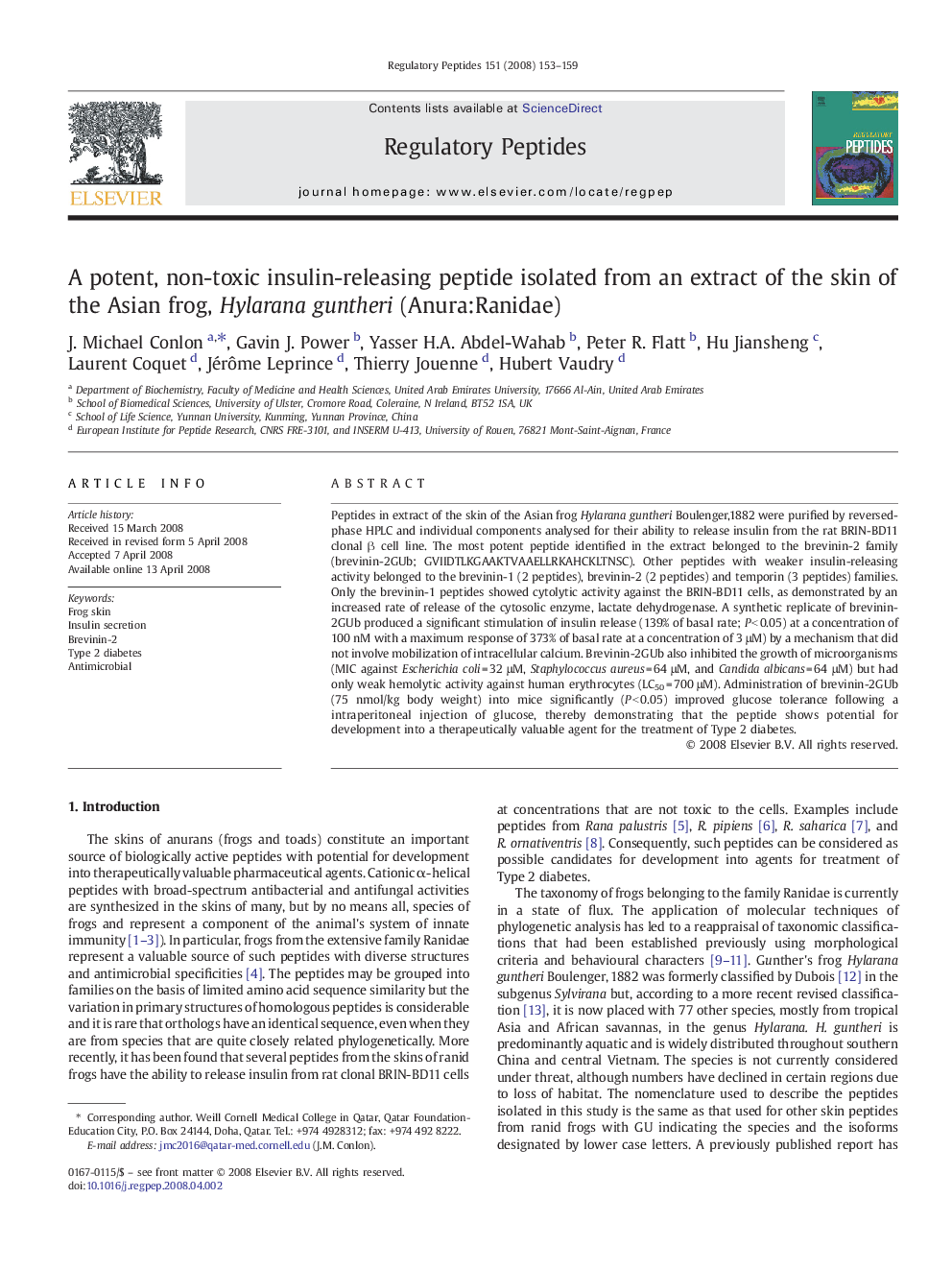| Article ID | Journal | Published Year | Pages | File Type |
|---|---|---|---|---|
| 2023036 | Regulatory Peptides | 2008 | 7 Pages |
Peptides in extract of the skin of the Asian frog Hylarana guntheri Boulenger,1882 were purified by reversed-phase HPLC and individual components analysed for their ability to release insulin from the rat BRIN-BD11 clonal β cell line. The most potent peptide identified in the extract belonged to the brevinin-2 family (brevinin-2GUb; GVIIDTLKGAAKTVAAELLRKAHCKLTNSC). Other peptides with weaker insulin-releasing activity belonged to the brevinin-1 (2 peptides), brevinin-2 (2 peptides) and temporin (3 peptides) families. Only the brevinin-1 peptides showed cytolytic activity against the BRIN-BD11 cells, as demonstrated by an increased rate of release of the cytosolic enzyme, lactate dehydrogenase. A synthetic replicate of brevinin-2GUb produced a significant stimulation of insulin release (139% of basal rate; P < 0.05) at a concentration of 100 nM with a maximum response of 373% of basal rate at a concentration of 3 μM) by a mechanism that did not involve mobilization of intracellular calcium. Brevinin-2GUb also inhibited the growth of microorganisms (MIC against Escherichia coli = 32 μM, Staphylococcus aureus = 64 μM, and Candida albicans = 64 μM) but had only weak hemolytic activity against human erythrocytes (LC50 = 700 μM). Administration of brevinin-2GUb (75 nmol/kg body weight) into mice significantly (P < 0.05) improved glucose tolerance following a intraperitoneal injection of glucose, thereby demonstrating that the peptide shows potential for development into a therapeutically valuable agent for the treatment of Type 2 diabetes.
